If you are in search of a climbing plant that produces striking blooms every year, consider planting clematis. This perennial vine makes for an eye-catching addition to any garden.
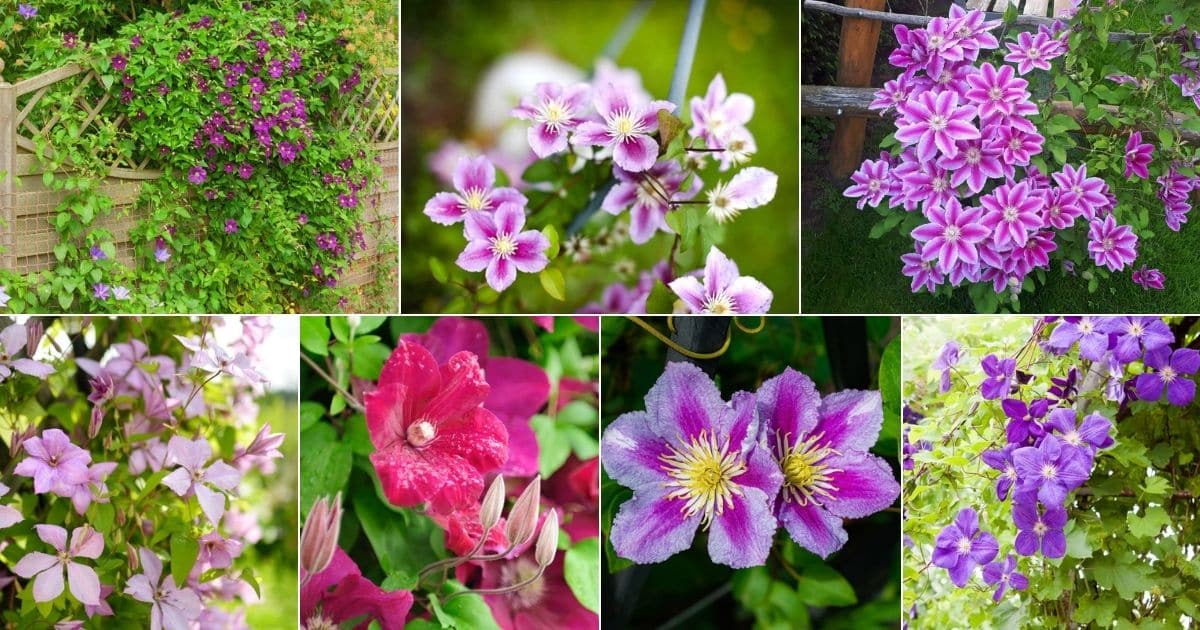
You may not know a clematis from a claytonia now, but by the time you have read through this full growing guide, you will be ready to plant your own clematis flowers. If you are just looking for specific instructions for one aspect of clematis care, jump to the section you need in the advanced jump below.
Jump to:
- What Are Clematis Flowers?
- Clematis Basics
- Where Do Clematis Flowers Grow?
- Why Grow Clematis Flowers?
- Clematis Landscaping Ideas
- Recommended Clematis Varieties
- When Do Clematis Flowers Bloom?
- How Long Do Clematis Flowers Bloom?
- When to Plant Clematis Flowers
- Ideal Growing Conditions for Clematis
- How to Plant Clematis Flowers
- How to Care for Clematis Flowers
- How to Divide and Transplant Clematis Flowers
- Recommended Planting Combinations for Clematis
- Frequently Asked Questions About Growing Clematis Flowers
- Where to Buy Clematis Flowers
What Are Clematis Flowers?
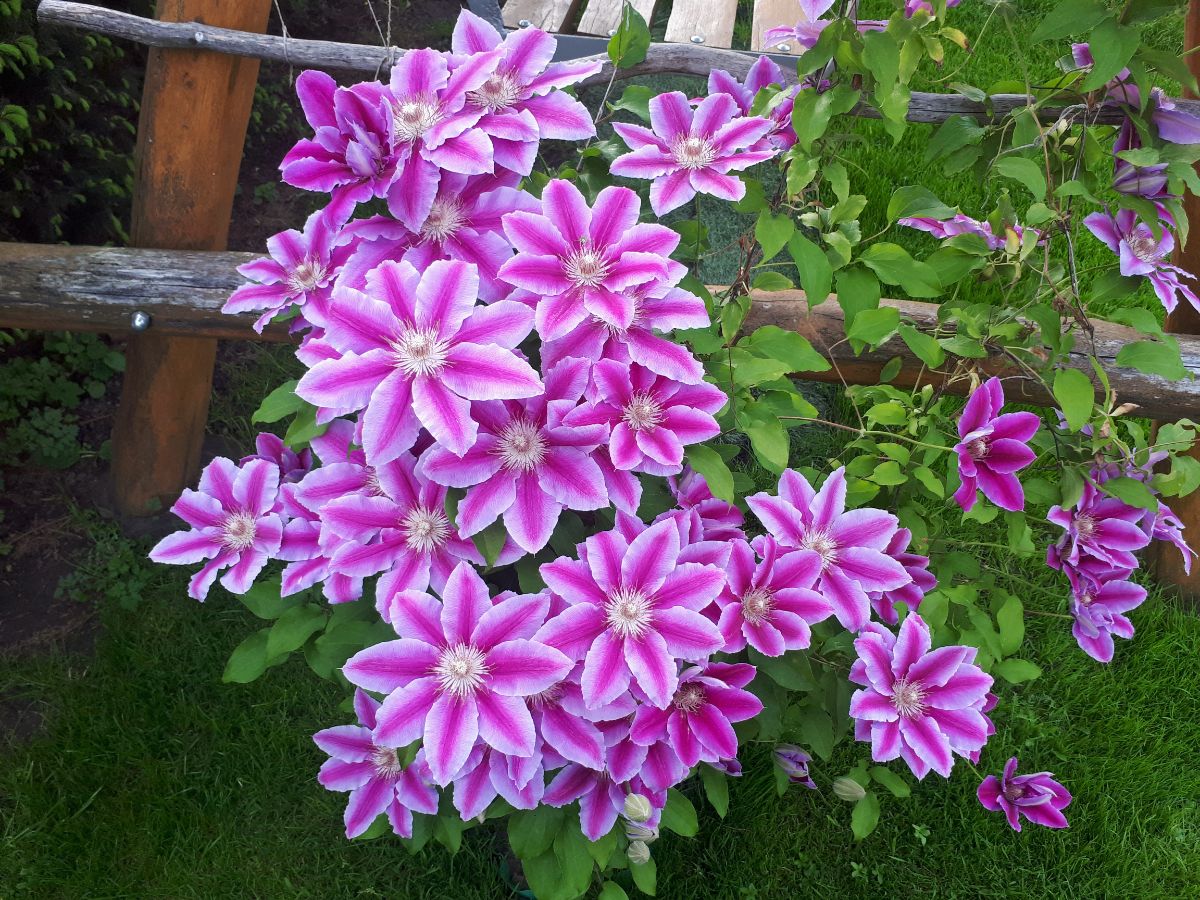
Clematis is the name of a genus of flowering plants consisting of around 300 species. It is part of the family Ranunculaceae, better known as the buttercup family.
The large, distinctive blooms of clematis plants bear little resemblance to the dainty flowers we picture when we think of buttercups, however.
The name of the genus is derived from the Greek word that refers to a climbing plant. They may be herbaceous perennials, evergreen plants, or even shrubs.
Sometimes, they go by the common name “leather flowers.”
While many clematis flowers only bloom once per season, there are some re-blooming cultivars as well.
Clematis Basics
| Zones: | 4-8 |
| Blooming season: | Spring and summer |
| Expected height: | Up to 30 feet |
| Soil: | Moist but well-drained soil |
| Sun: | Full |
Where Do Clematis Flowers Grow?
Most clematis plants are native to the Far East. During the Victorian era, they were popularly cultivated in European gardens. Today, they are cultivated around the world in climate zones 4-8.
Why Grow Clematis Flowers?
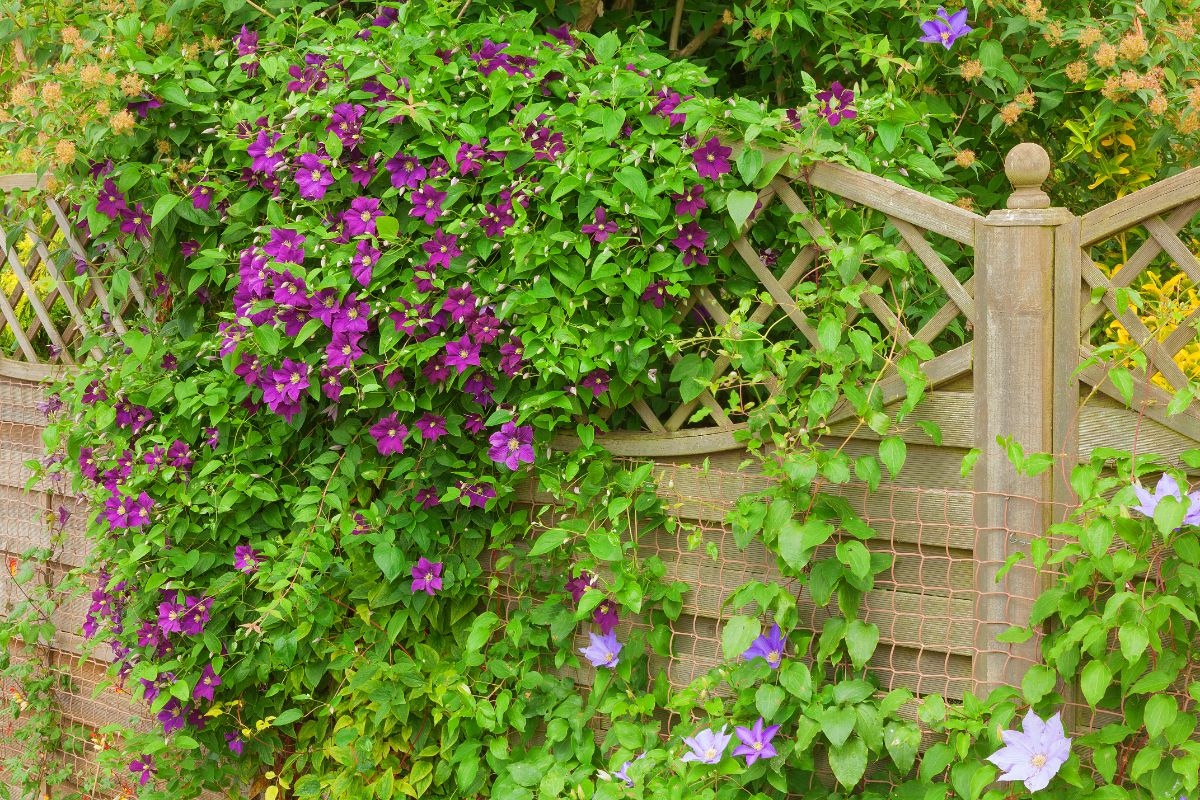
- This is a plant that is widely recognized for its ornamental beauty. Indeed, the Royal Horticultural Society has given its Award of Garden Merit to more than 80 different cultivars and varieties of clematis! If that were not enough, there are thousands of cultivars to choose from in total.
- You can use clematis flowers in your arrangements. Alamanac points out that the stems are quite short, however, which may pose some challenges. The site recommends you put them close to the arrangement’s bottom to fill it in.
- There is a clematis for every space. If you just want a short one, you can find clematis plants that are just 2-5 feet tall. If you want a super tall one, some cultivars can climb up to 30 feet.
- Clematis vines can produce so many flowers. Just one plant might give you over a hundred a year. The flowers are also large and showy, sometimes nearly a foot across. So, even from clear across your garden, you can see them distinctly.
- The landscaping possibilities are endless (see below). Few other plants can help you transform your grounds in a way that is as dramatic as what you can achieve with even a single leather flower vine.
- Many types of clematis are relatively low-maintenance. They require little or nothing in the way of pruning, and rarely require division.
- Clematis is a long-lived plant. A thriving vine could still be flourishing on your property half a century from now!
Clematis Landscaping Ideas
You will have a blast figuring out how to integrate clematis vines with your landscape. There are so many different possibilities!
- Shade for your porch. Depending on the angle of the sun, you might be able to grow clematis up your porch posts in such a way as to provide some extra shade for you to enjoy.
- Archway. Try putting in a trellis arch and growing leather flowers over it. You can then use that arch to frame a doorway, the entrance to your garden, or any other point of interest in your landscape.
- Up the walls. You can successfully cover a wall with clematis vines if you give them something to hold onto (i.e. a trellis). This is a wonderful way to transform a dull, lifeless wall into something colorful and inviting.
- Line a path. Do not forget that there are some clematis plants that grow like shrubs. You can use these in your landscape in the same ways you would other shrubs, like lining a walkway.
- Spruce up your mailbox. Turn your mailbox into one of the most enchanting features of your outdoor space by growing clematis up around the post.
- Around a birdhouse. Similar to the mailbox idea, you could grow these flowers up around a birdhouse post (or a birdbath post).
- Over a fence. Fences often are just what clematis vines need to grab onto. You can beautify many types of fences this way, turning them into something that looks like it belongs in a storybook.
- Behind or on a bench. The masses of flowers on clematis plants can beautifully frame a bench. You can, for example, grow them up a wall in the background or up a couple of trees framing the bench. You could even grow them on part of the bench itself.
Recommended Clematis Varieties
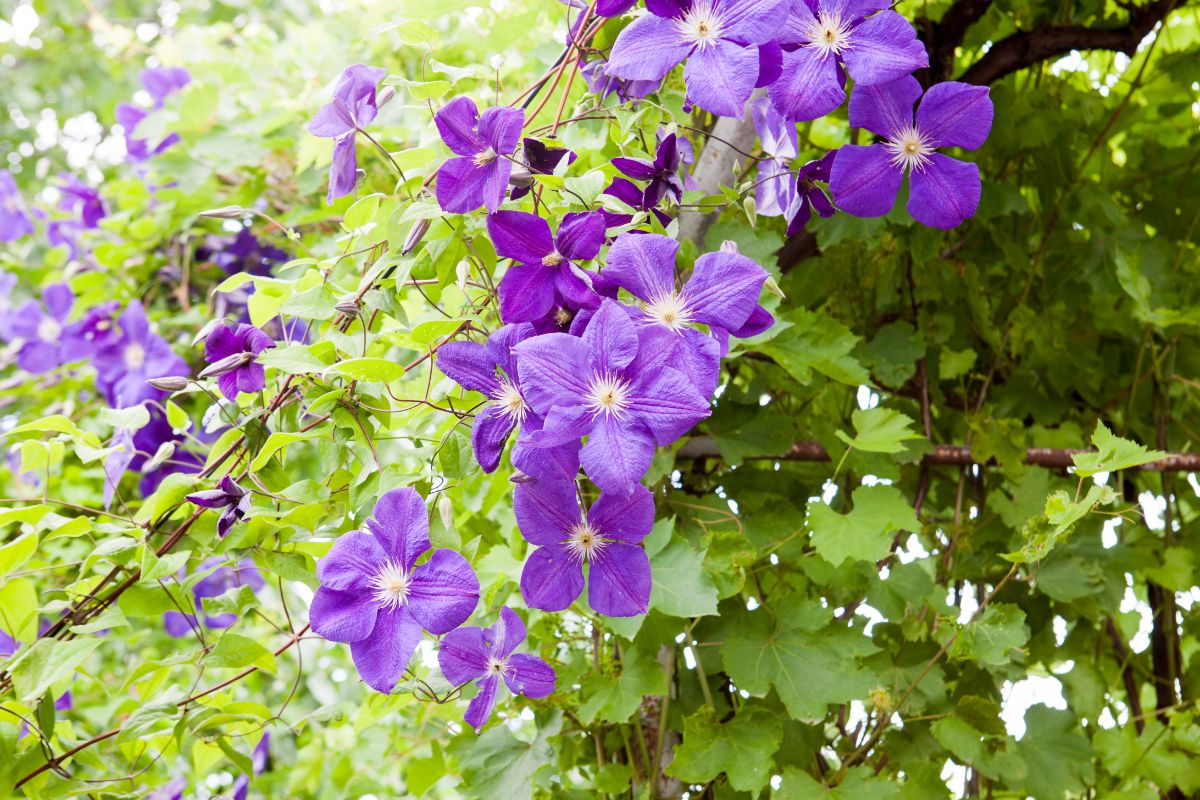
There is a huge variety in the clematis cultivars you can grow in your garden. Below, we give you some examples that produce stunning, showy blooms.
- Alpine: The flowers on this type of clematis feature white and purplish-bluish petals and a nodding shape that makes them similar in appearance to columbines.
- The President: For purple blooms, consider this cultivar which produces leather flowers with a classic look. It can bloom twice per year in spring and fall, rewarding you with beautiful blooms through much of the season.
- Anemone: These lovely vines produce blooms in pink or white. They are smaller than many other types of leather flowers, but abundant. They will put you in mind of cherry blossoms.
- Claire de Lune: A beauty among large-flowered cultivars is the dramatic “Claire de Lune,” which features white flowers with just a touch of pale lavender in their petals.
- Brother Stefan: Producing an abundance of flowers, this lovely cultivar is an intense summer bloomer.
- Ernest Markham: The large-sized flowers of this cultivar are a bold magenta color.
- Crystal Fountain: The double blooms on this vine are particularly distinctive with wide pink petals framing inner “fountains” of thin, wispy white petals.
- Rebecca: If you are looking for a clematis with an uncommon hue, consider this cultivar with its red petals. In the centers are contrasting yellow.
- Diamond Ball: The pale purplish-bluish white blossoms of the “Diamond Ball” are double flowers with a voluminous effect.
- Piilu: The abundant flowers on this cultivar are light pink with darker pink toward the centers of the petals. They feature yellow in the centers like little pops of sunshine.
- Java: If you are more interested in numerous flowers than big ones, the “Java” cultivar will delight you. It produces whole galaxies of small white flowers that will remind you of stars.
- Tekla Garland: This cultivar produces plentiful deep purple blossoms. When it is in full bloom, you will probably see more flowers than leaves.
- Killian Donahue: When the blooms of this cultivar first open, they have a fuchsia color with red in the middles. Over the course of the season, they fade until they are a lavender hue with pink running down the middles of the petals.
- Duchess of Albany: For a drought-resistant addition to your garden, consider the “Duchess of Albany,” which sports bell-shaped pink blooms. The petals are darker in their centers.
- Cabellos de Angel: This unusual-looking cultivar of clematis has flowers with thin, wispy petals.
Those are just a few examples of the wide variety of clematis vines available!
When Do Clematis Flowers Bloom?
The bloom period for clematis depends on the cultivar you choose as well as your location. Some types of clematis blossom as early as February. Others bloom as late as November. So, if you purchase a few different cultivars, you can enjoy these perennial blooms throughout the season.
How Long Do Clematis Flowers Bloom?
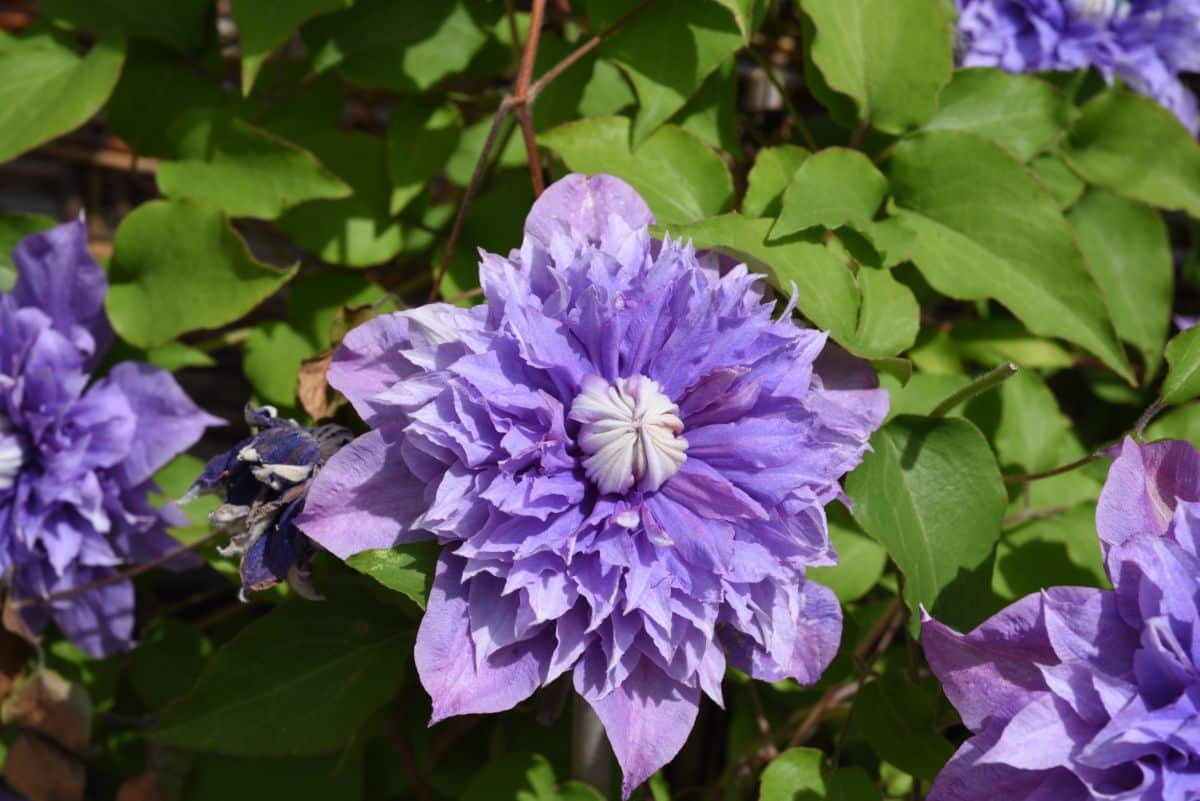
Clematis plants can bloom for weeks. Not only that, but there are re-blooming varieties. You will need to wait around a month to a month and a half between flushes of blooms. But with repeat blooms, these cultivars can provide you with flowers through much of the season.
When to Plant Clematis Flowers
Ideal Growing Conditions for Clematis
How Much Sun Do Clematis Flowers Need?
Directions for clematis plants usually just say “full sun.” But it is not as simple as finding a sunny spot. The following guidelines can help you pick the right spot:
- A location where the plant will get 6 hours of direct sunlight.
- A spot where the base of the plant receives more shade and the upper parts of the plant receive more sun.
- A location which receives some shade in the afternoon, if you are in a hot climate.
- Partial shade is preferred for certain hybrids, which may otherwise not produce as vividly colorful blooms.
If you do not currently have a spot that is cool and shady near the base and sunny above, you can solve that problem simply by using some mulch or groundcover.
What Type of Soil is Right for Clematis Flowers?
Pretty much regardless of what type of soil you have, you should be able to grow clematis vines. They are highly adaptable, but moist, well-drained soil is a must. They also prefer their soil to be on the rich side.
Slightly acidic soil is best for these vines. Adding compost to alkaline soils can help you lower their pH while also introducing more nourishment for your leather flowers.
As discussed above in the section on sunlight, it is also important to keep the soil cool.
How Much Water Do Clematis Flowers Need?
These easy-care vines do not need a lot of attention in the water department. Around an inch per week should keep them happy. Sometimes in hot, dry conditions, they may need a little extra.
How to Plant Clematis Flowers
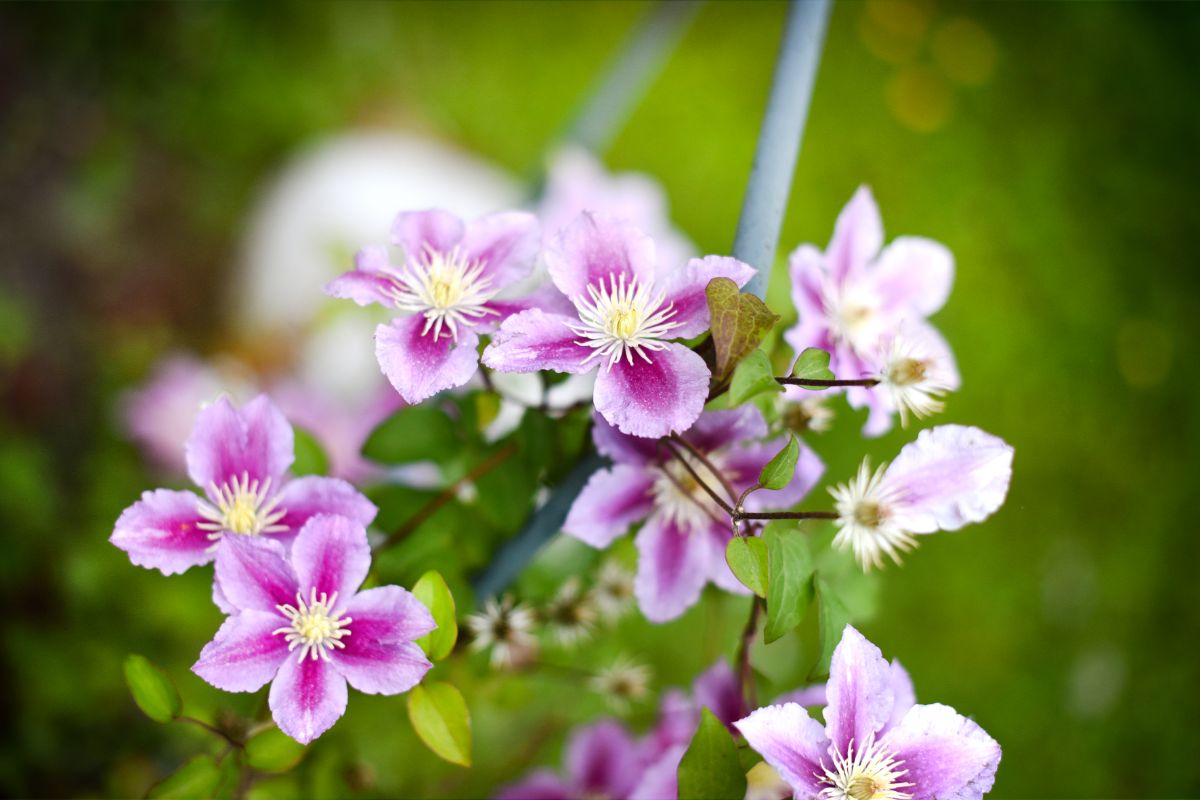
You will probably purchase clematis in the form of a nursery plant for your garden. Below, we tell you how to plant clematis either in containers or in your garden beds.
We then will tell you how you can propagate clematis plants from seeds or cuttings.
Container Planting
There are a couple of reasons why you might want to grow clematis vines in container gardens. The first is convenience. You might want to have your vine crawl up a particular wall or such that simply does not have a garden bed close to it. Growing clematis in a pot allows you to position the plant where you need it.
The other reason could be that the soil in your garden beds just is not what clematis requires. Containers offer you more control and micromanagement of the conditions. Here are the steps.
- Get the right containers for growing clematis plants. Remember, clematis plants need to keep their feet cool. That means you should think carefully about what type of pot they are going into.
Ideally, you should pick pottery, wood, or stone. These materials do not conduct heat as readily as plastic or metal.
As always, the container needs holes for drainage. You may need to add these yourself in some cases.
As to size, bigger containers are better for clematis plants. The minimum width should be 15 inches, and the minimum depth should be 18 inches.
- Put in the potting mix. It is helpful to add compost to the container, but avoid those that are based in peat. Leave room for the plants.
- Remove the clematis plants from their nursery pots. Next, put some warm water in a dish for each plant, and spend a couple hours soaking their roots. They can benefit from this hydration process.
- Plant the clematis plants. Put each of them in their permanent containers, filling in the soil around them.
5.Water deeply.
All that is left to do is to put the containers where you want your clematis plants to permanently reside. Then, give them extra water during the establishing phase.
Ground Planting
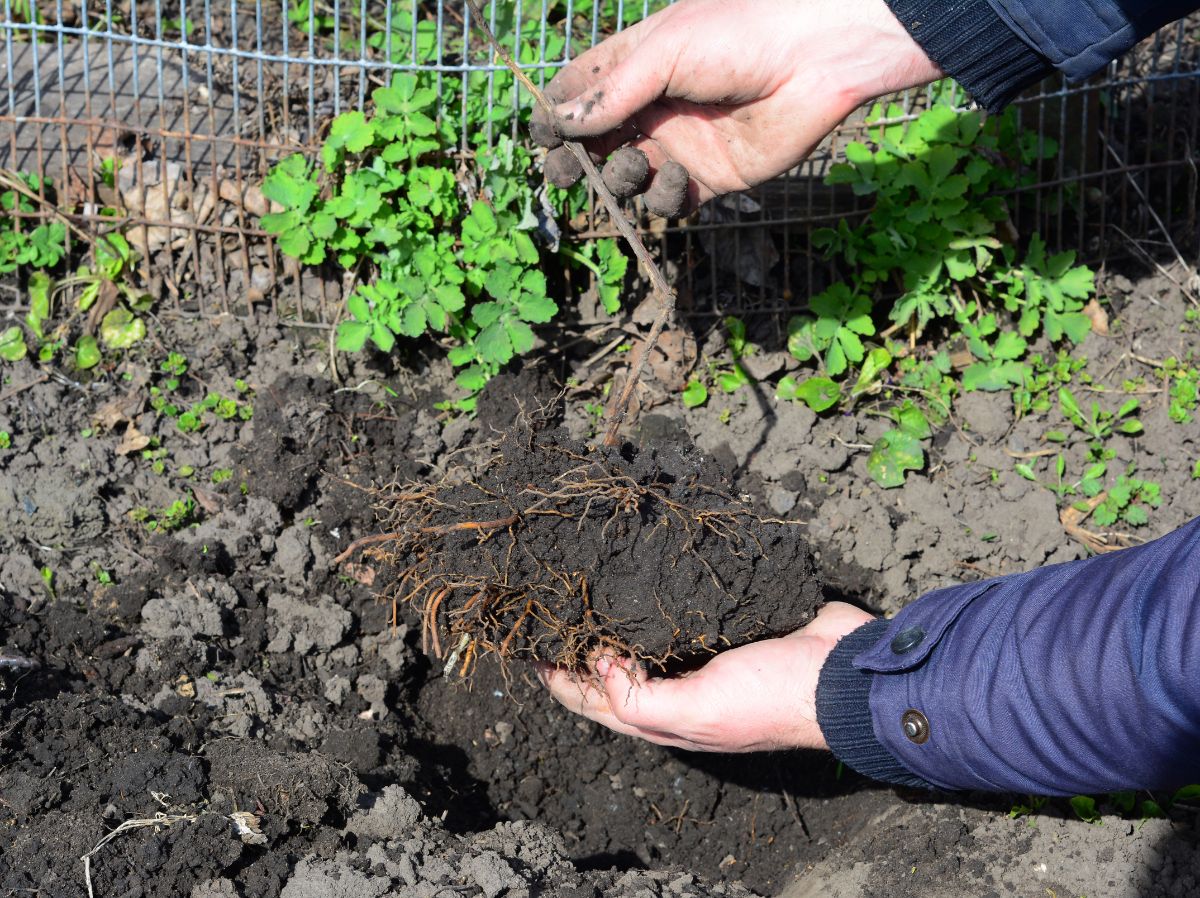
Here is how to plant a nursery plant in your garden bed rather than a pot.
- Pick a suitable location where the clematis will be able to enjoy lots of sun, but also cool roots.
- Prepare the soil for the clematis plants. If it does not have adequate drainage, you may need to mix in some compost. Manure and bonemeal may be useful additions as well.
- Make holes for the plants. Each of them should be double the width of the root ball at a minimum. Allow for 2-3 feet of space between each of the clematis plants.
- Plant the clematis plants in the holes and backfill the soil. Note that the crowns of the plants should be buried a good 4-6 inches down.
- Water well.
As the clematis plants establish in your garden beds, they will need extra water.
With both ground and container clematis plants, the vines will need something to climb. That could be a wall or a fence or something else already in place. If you do not have something already there, you may need to put in a trellis or such.
Starting Clematis Flowers from Seed
Clematis nursery plants can often run more than $30 apiece. As that is the case, you might want to try propagating clematis plants yourself to save money on future purchases. Here is how you can grow clematis plants from seeds.
- Start by harvesting the seeds. The easiest way to do this is actually to tie a bag around the seed head of one of your plants. Just wait for the pods to mature. They will end up in the bag instead of on the ground.
You can store the seeds you gathered in a container. Put it somewhere dry.
- Stratify the seeds.
When you are ready to proceed, you can stratify the seeds by storing them in the fridge for a month. Before you do, put them in a bag and add some vermiculite that you have moistened.
- Get a seed cell tray or similar small container and add seed starting mix to it.
- Create indentations in the seed starting mix, then put a seed in each of them.
- Lightly cover the clematis seeds.
- Gently mist with a spray bottle, taking care that you do not wash out the seeds.
- Get a plastic cover or some plastic wrap to seal in the moisture.
- Put the covered seed tray somewhere warm where the seeds are exposed to light.
- Watch the tray for signs of germination over the weeks ahead. Do not let the soil dry out. Mist when needed.
How long the germination process lasts depends on the cultivar. In some cases, it might be just a few weeks before the seedlings pop up. But other times, it can actually be a year or more.
The British Clematis Society explains, “Species clematis and many small-flowered types can germinate in six weeks, but can take a year or more if conditions are not to their liking. The seed of large-flowered clematis may remain dormant for up to three years, so have patience!”
For that reason, it is super important to look up how long you can expect the cultivar you are propagating to take to germinate.
You do not want to embark on a years-long process that you are assuming will be complete within weeks.
- When the seedlings have grown, you can harden them before transplanting them outdoors in larger containers or your garden beds.
Starting Clematis Flowers from Cuttings
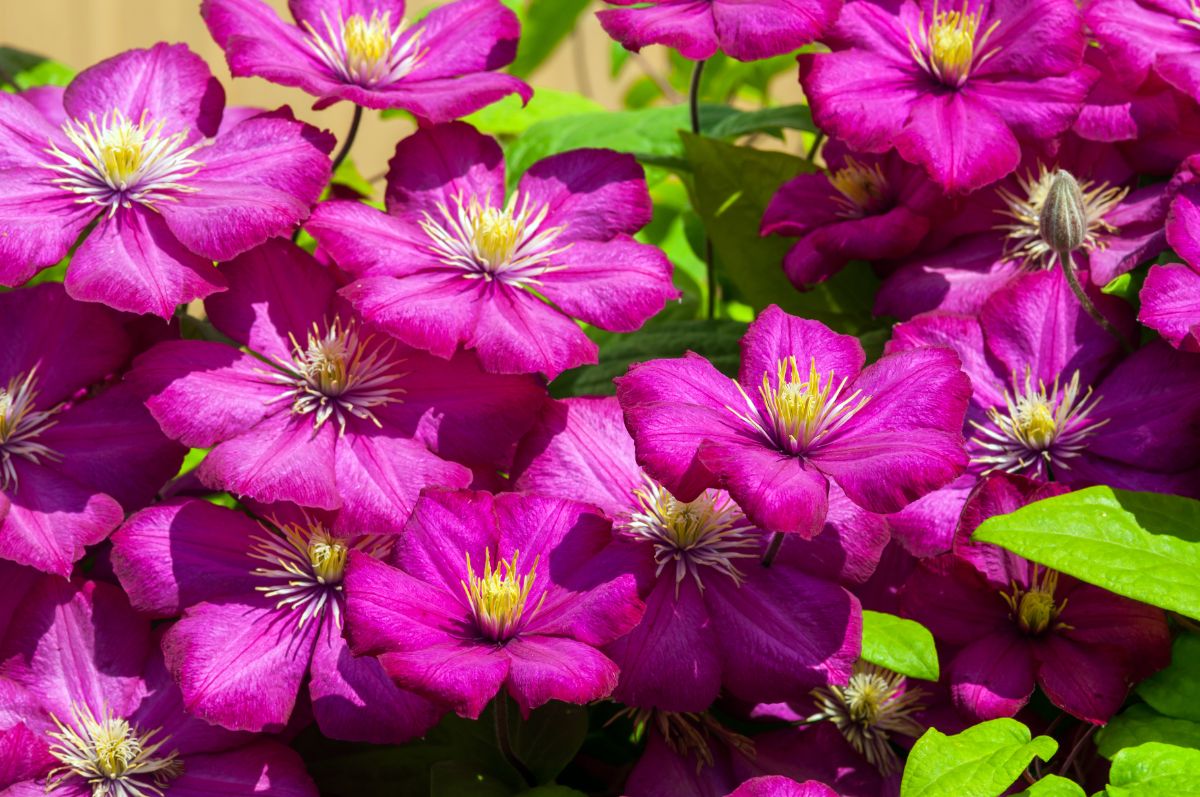
Starting clematis from seed is not the only propagation technique. Here is how to propagate clematis from cuttings.
- Take the cuttings.
When you take them is up to you, but late spring into early summer is the ideal timeframe.
Look for some relatively new growth to remove. You do not want them to be super delicate, but you also do not want them to be hard to cut. Avoid stems that already have flowers or buds on them.
Aim to get around 3 feet of stem when you take each cutting. Look for a leaf joint, and make the cut right above it.
- Get some damp paper towels and wrap them around the base of the stem. Then, insert the wrapped part of the stem into a bag. This will help prevent it from drying out.
- Grab some pots and fill them with potting mix. Moisten the potting mix. Let excess water drain out. You should actually consider taking care of this step before you take the cuttings. You do not want them to sit around for too long outside the pots.
- Now, you are going to pull the cutting you took out of the bag and set it down on a cutting board.
Use sterilized shears to cut out some individual pieces. Each one should have a leaf joint right near the top and a single leaf still attached.
So, you started with a single long cutting from your plant, but now you should have multiple segments that are each appropriate for propagation.
- Dip the ends of the cuttings into rooting hormone.
- Make little holes in the potting mix. It is easy to do this using a chopstick or similar object.
- Push each of the cuttings down into the holes and gently press the soil in around them so that they are stable.
- If the potting mix is still pretty moist, you are good to go for now. But if it has dried out substantially while you were working, you should add a bit more water.
- In humid conditions, it may be fine to leave the containers uncovered. But in dry conditions, you need to put bags or jugs over the top.
You may need to use stakes to prop the bags up. If you do not and they touch the cuttings, they could rot.
- Wait for your cuttings to grow roots. While they do, the potting mix must remain moist. Check on it and re-moisten it as needed.
How long will it take before the cuttings grow roots? About 2-4 weeks. You can then carefully remove the cuttings from their small containers and transfer them to larger ones or your garden beds.
As with starting seeds indoors, you need to harden the cuttings before they go permanently outside.
How to Care for Clematis Flowers
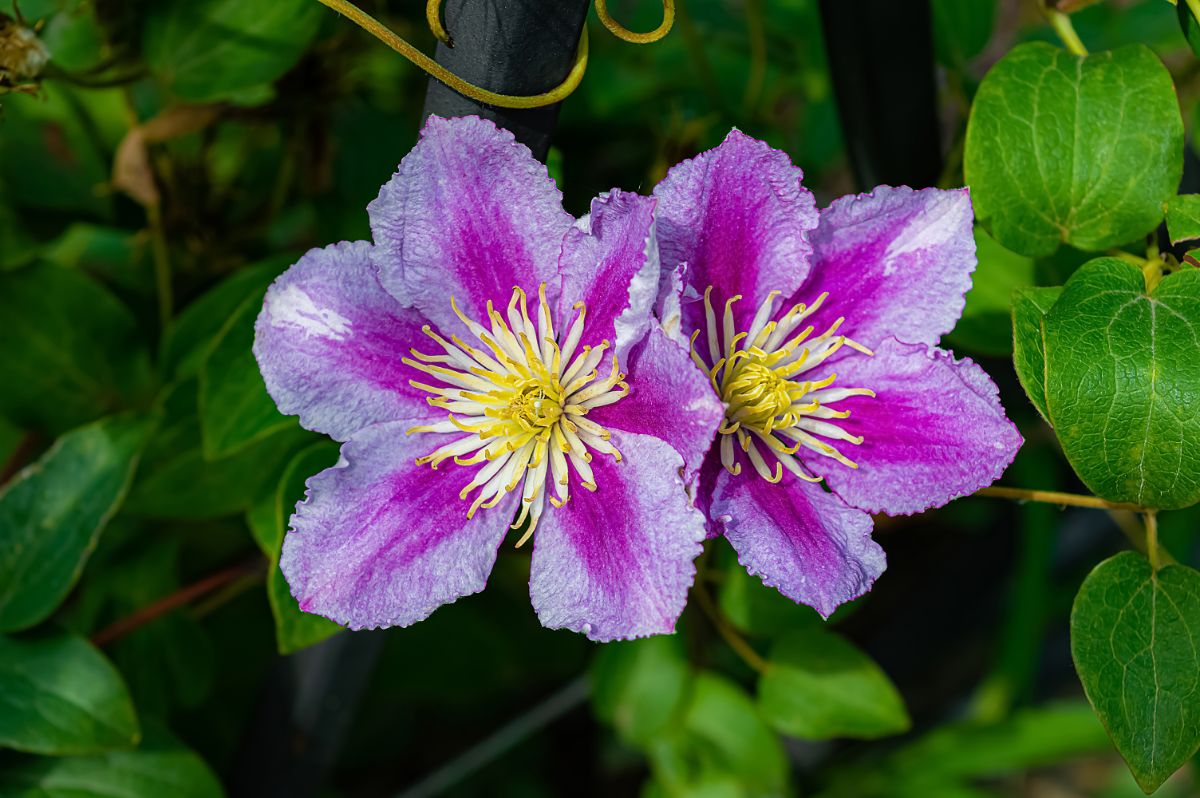
Now that you have instructions for planting and propagation, we can talk about mulching, fertilizing, and other aspects of clematis care and maintenance.
How to Fertilize Clematis Flowers
Clematis plants benefit from extra nourishment. White Flower Farm offers detailed instructions, saying, “Clematis is a heavy feeder; supply a low nitrogen fertilizer such as 5-10-10 in spring, when the buds are about 2″ long. Alternate feedings every 4 to 6 weeks with a balanced 10-10-10 fertilizer. Continue this alternate feeding until the end of the growing season.”
How to Mulch Clematis
Because it is so important for the soil to be cool around clematis roots, these plants can benefit greatly from mulch.
The ideal time to mulch is in spring. Wait for the weather to warm up before you do it. Around 2 inches of depth is best.
You do not have to mulch your clematis vines if you have groundcover plants growing around them. Those will provide the shade necessary to keep the soil temperature within an acceptable range.
How to Stake Clematis
As perennial climbers, clematis vines need something to attach to. Not only that, but they need it immediately after you plant them.
That is why it is wise to figure out exactly where you want your clematis plants before you get them, and make sure you have what you need already in place before you put them in your garden.
Choosing a suitable object for your clematis plants to grow up requires you to understand how the plants hold onto their supports. They do so using their leaf stems.
If a support is too thick, the leaf stems are not able to latch on. But a support that is too flimsy will not be able to bear the weight of the plant as it grows and gets heavier.
Garden wire fencing works great since you can prop it against a wall or wrap it around a post. It provides just the right balance of sturdy support and hook-able structure. The clematis plants should love it.
Obviously, the wire fencing will just collapse if you do not find a way to keep it in place. Stretch tie tape works well for this purpose.
Other materials that work well for helping clematis plants climb up structures include fishing line and invisible netting.
You will also discover there are some objects that clematis vines can climb up on their own without assistance, such as trees. This has to do with the texture of the bark.
Those are just the basics of helping each vigorous climber grow up objects. It is quite an extensive topic on its own, one which will require you to do some extra research.
How to Prune Clematis
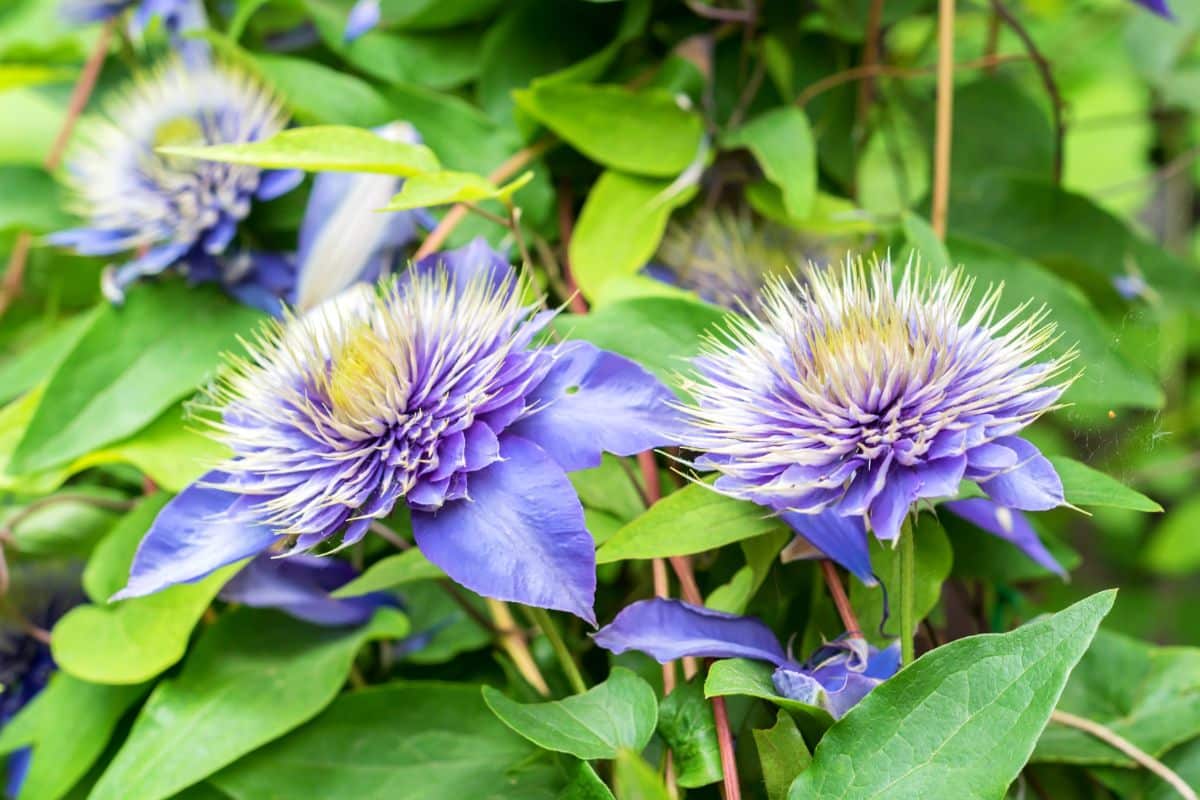
If you want to maintain the appearance of your clematis plants, pruning is absolutely necessary.
How to Deadhead Clematis Flowers
If you want these amazing plants to produce more clematis blooms, you can try deadheading the varieties that re-bloom during the season for a second flush of flowers. This is also a way to prevent your clematis plants from going to seed.
When to Cut Back Clematis Flowers
Pruning clematis is a little more complex a matter than pruning a lot of other perennials. The reason is that some types of clematis plants produce flowers on old growth, while others do it on new growth. Indeed, clematis plants are split into three different pruning groups.
- Pruning Group One: Early Flowering: You will know your clematis plant belongs to this group if the bloom time is before June. These types of clematis plants require only the most minimal pruning to maintain their appearances. Sometimes, they require none at all. This is what you are looking for if you want low-maintenance plants!
- Pruning Group Two: Clematis Plants With Large Flowers: Pruning plants in this group is not too different from those in Group 1. They tend to blossom in early summer. They likewise require little in the way of pruning. Late winter is a good time to take care of it.
- Pruning Group Three: Late Flowering: Late each winter, you will need to trim back parts of these clematis plants that have died. This is the type of clematis that requires the most significant pruning.
So, even though pruning clematis may require some extra research (to identify which pruning group your cultivar is in), you can see that it is at least not difficult.
How to Divide and Transplant Clematis Flowers
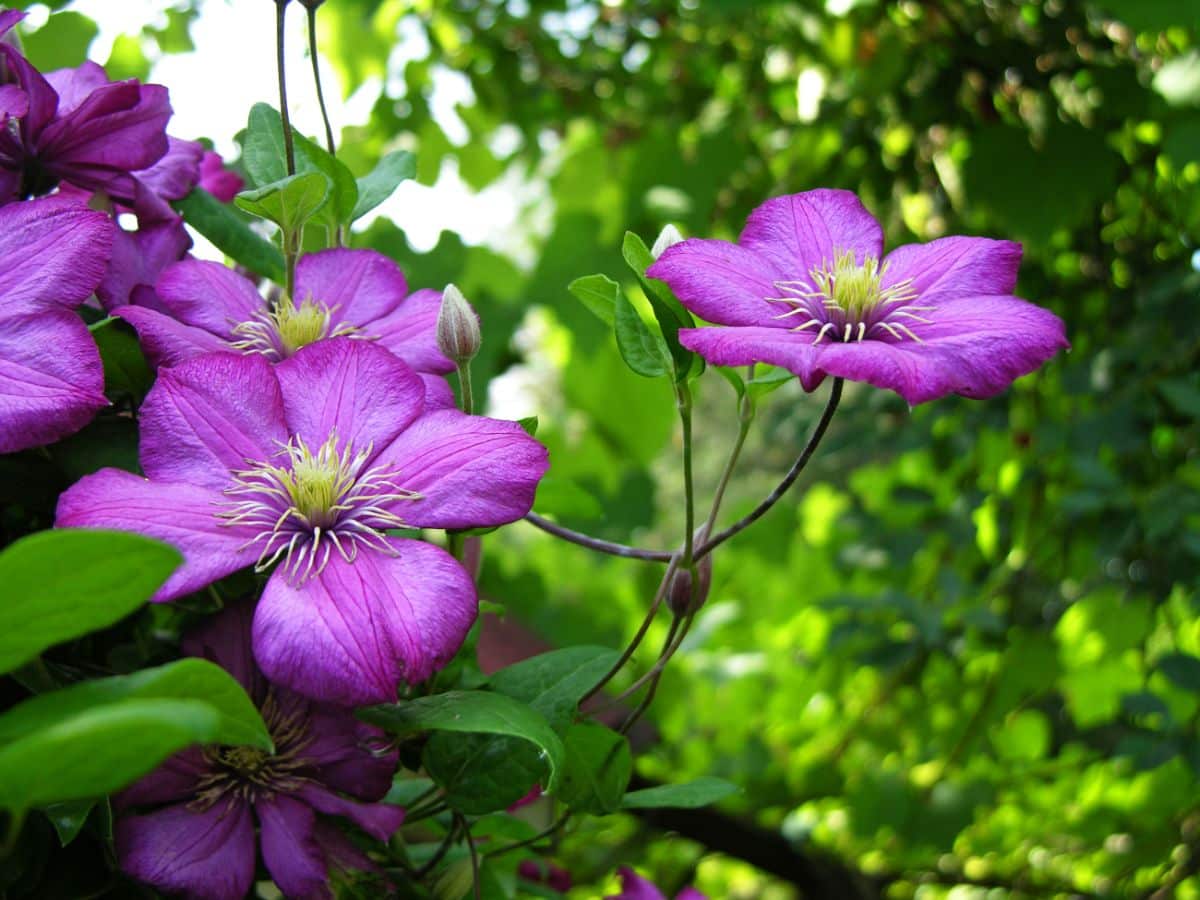
It is not all that common to divide clematis. Indeed, if you do it at all, it will probably be roughly on the order of once per decade, not once every few years like with most perennials.
Indeed, with vigorous climbers, dividing does not make a lot of sense, and may not even be all that feasible.
But with clematis plants that grow more like shrubs, dividing and transplanting them may sometimes make sense.
The best time of year to do this is in the spring, before the weather heats up too much.
- The night before you plan to do the dividing, you should water the plant well.
- Use a shovel to dig in a circle around your clematis plant, staying well clear of the roots.
- Push the shovel under the root ball, and pry upward to remove the plant from the ground.
- Try and shake as much of the extra soil away as you can so it is easier to see the roots.
- Use a knife to split the crowns apart, making sure that each of them has a minimum of three stems.
- Do not let the roots dry out! Moisten some burlap and wrap up the roots.
- Make holes for the newly-divided clematis plants. Take them out of the burlap and plant them.
Water well and mulch afterward, and keep providing extra water during the establishing phase.
Are Clematis Flowers Vulnerable to Diseases or Pests?
Clematis flowers are sometimes attacked by diseases such as clematis wilt (a form of leaf spot and stem rot), and powdery mildew.
Clemson Cooperative Extension Home & Garden Information Center writes, “The two fungi credited with causing clematis wilt are Phoma clematidina and Ascochyta clematidina. With this disease, the plant or part of the vine suddenly collapses, and within a few days, the stem and leaves turn black and die.”
What should you do if it happens? The site recommends that you trim off all parts of the plant that are diseased, and then get rid of the debris. Some plants do not recover, but others will return the next season.
If you have a lot of trouble with clematis wilt, you might try purchasing hybrids that feature smaller flowers, rather than those with the bigger, more dramatic blooms. They are not as likely to be afflicted by clematis wilt.
The site adds, “Clematis leaf spot can be controlled with foliar sprays of thiophanate methyl and the stem rot controlled with soil drenches of thiophanate methyl. Follow label directions for mixing and use. See Table 1 for products containing thiophanate methyl.”
As for powdery mildew, you probably are already an expert at preventing that with other perennials. If your plants have sufficient airflow, that is a big help. So is watering them close to the base so that the leaves stay dry.
What about pests? Some people say that clematis are relatively pest-free, while others complain about insects and mammals. So, your mileage may vary depending on your location.
Some examples of insects that can trouble clematis plants include whiteflies, caterpillars, aphids, soft scale insects, vine weevils, leaf miners, earwigs and thrips.
Slugs and snails may be problematic for clematis vines.
Finally, rabbits, mice and chipmunks may sometimes pay clematis plants a visit. On the bright side, they are deer-resistant.
Recommended Planting Combinations for Clematis
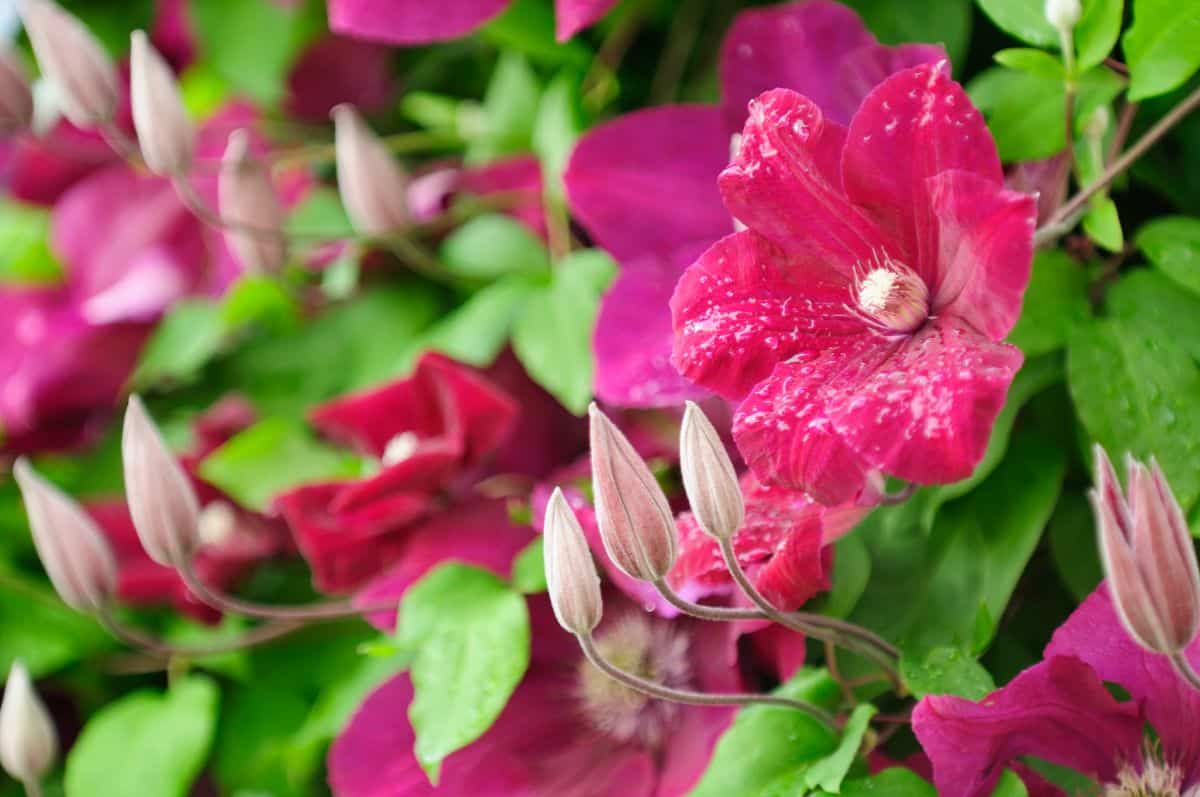
It is pretty easy to come up with planting combinations for clematis since you can find clematis cultivars that will bloom at different points of the season! With their climbing habits, they can make a stunning backdrop for other plants.
- Roses. Clematis and roses growing together makes for a romantic look. Both types of blooms are large and dramatic with neither overshadowing the other.
- Vegetables: A lot of people like to grow lettuce and other veggies around clematis since they can soak in the sun.
- Ornamental grasses: These can look lovely planted around the bases of your clematis plants.
Remember, anything that can provide some shade for the soil but leave clematis otherwise exposed to the sun can be a nice choice.
Frequently Asked Questions About Growing Clematis Flowers
Insects, slugs, snails and mammals may eat clematis plants—but generally not deer.
Are you asking this question during the first or second season after planting? If so, you might just need to be patient.
As explained here, there is a saying that goes, “The first year they sleep, the second year they creep, and the third year they leap.” Clematis plants tend to speed up growth during year three, so hang in there.
Certain types of clematis vines are classified as invasive in some locations. Stick with types of clematis that are not invasive in your region.
Yes, there are compounds in clematis called glycosides that can cause toxic symptoms in cats and dogs such as vomiting, drooling and diarrhea. Luckily, pets do not tend to be drawn to clematis for munching purposes; the bitter taste is a turn-off.
Clematis plants are perennials, which means they bloom year after year.
Where to Buy Clematis Flowers
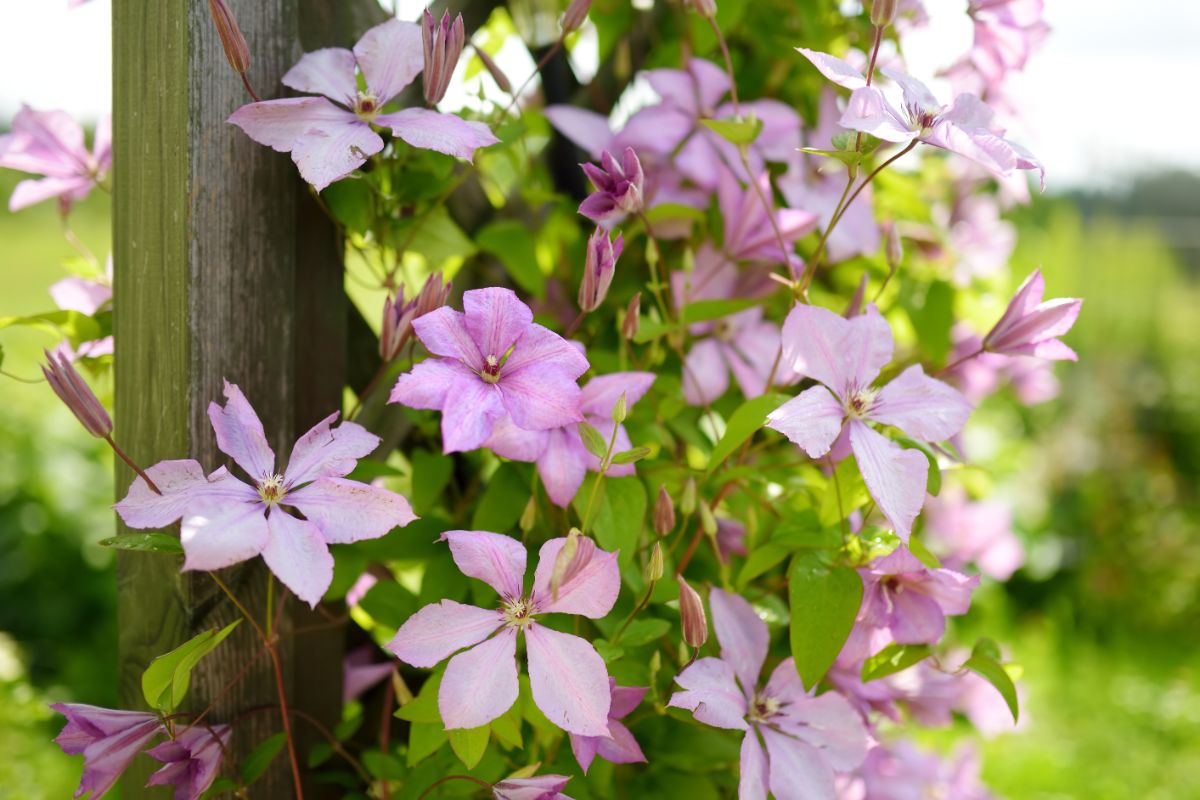
You can probably find some clematis plants for sale at your local nursery. But if you want the biggest selection of cultivars, you will need to try online. Click below to shop clematis flowers now.

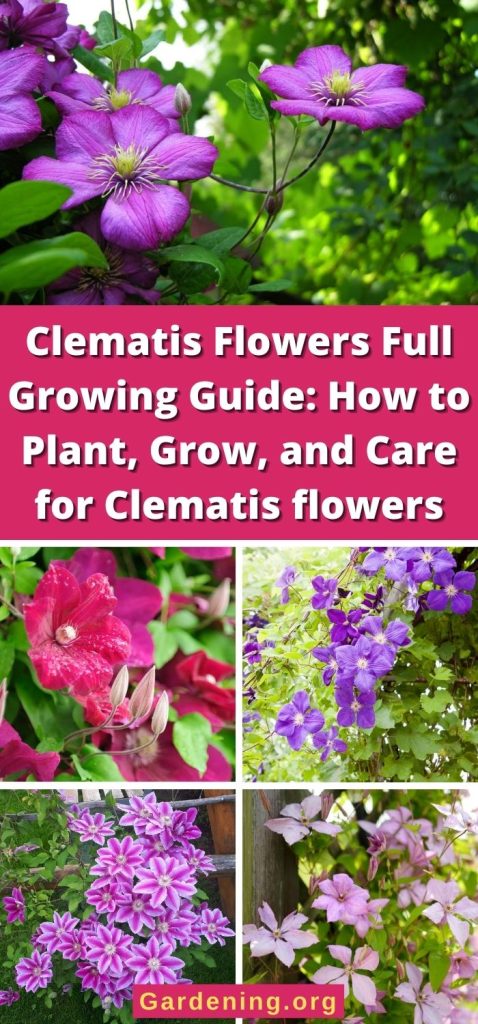
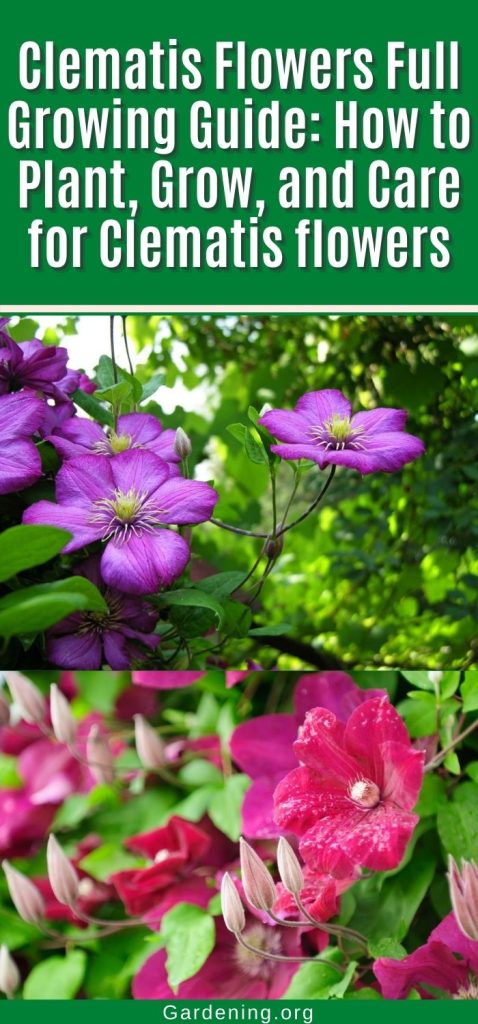
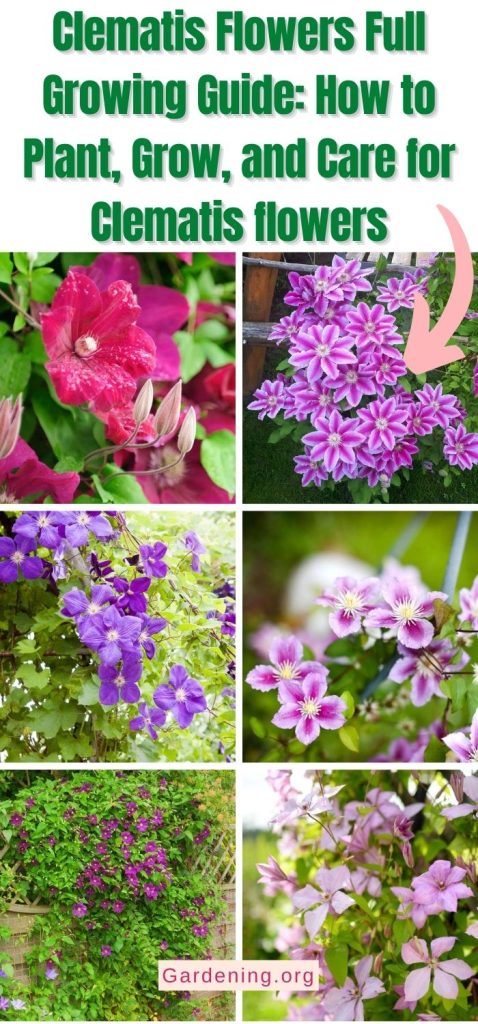
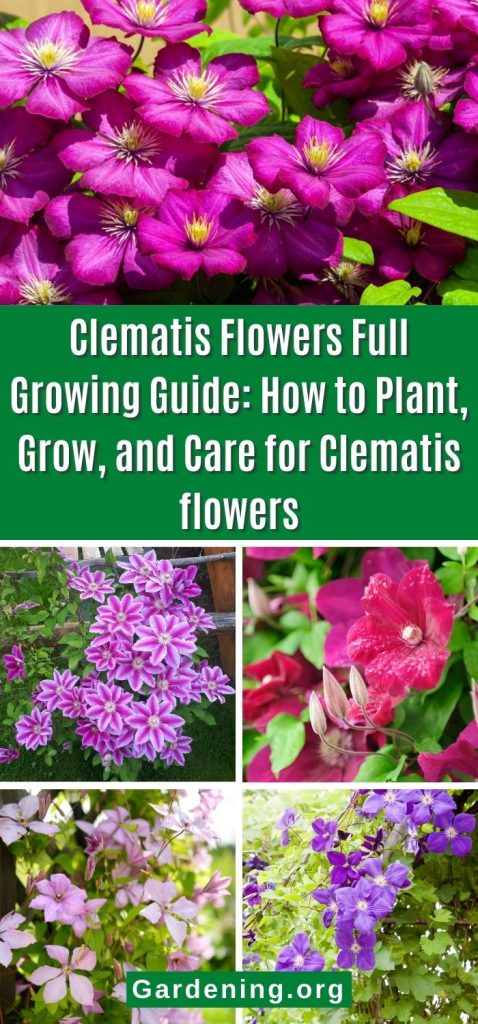
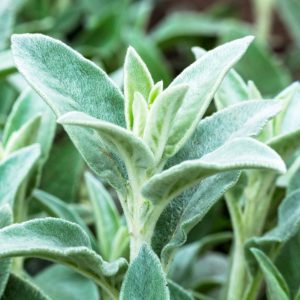

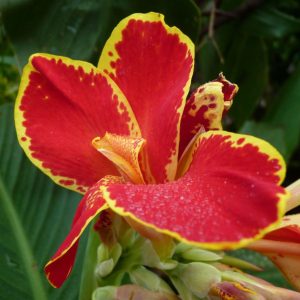
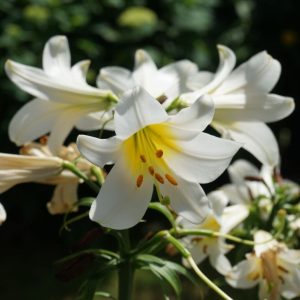
Donna Smart
My love I love hummingbirds what is the best way to give him the best life that I can
Donna Smart
Which flowers are the best to buy for hummingbirds
Mary Coakley
Thank you for your.comprehensive.information on clematis